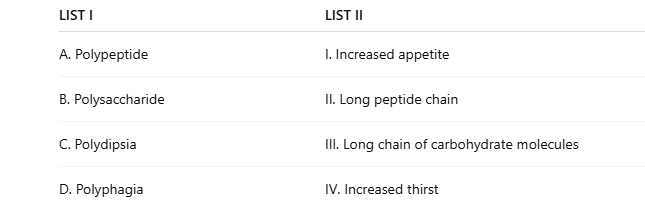Correct option is A
A low sodium diet is often recommended for individuals with liver cirrhosis. In liver cirrhosis, the liver becomes damaged and scarred, leading to issues with fluid retention (ascites) and imbalanced electrolytes, including sodium. Reducing sodium intake helps prevent fluid buildup and manages symptoms like swelling and high blood pressure, which can occur with cirrhosis.
Information Booster:
- Liver cirrhosis is associated with altered liver function, leading to an inability to regulate sodium and water properly. A low-sodium diet helps manage the fluid balance in the body, reducing the risk of complications such as ascites, where excess fluid accumulates in the abdomen.
- Sodium restriction, along with other dietary changes, can help control the buildup of fluids, which can strain the heart and other organs. In severe cases, this dietary approach is an essential part of managing cirrhosis.
Additional Knowledge (Incorrect Options):
- (b) Fever: A low sodium diet is not typically recommended for fever. In fact, hydration and maintaining electrolyte balance are often more important in managing fever.
- (c) Cold: For the common cold, sodium intake is not usually a concern. Rest, fluids, and over-the-counter medications are the primary treatments.
- (d) More than one of the above: This is incorrect because liver cirrhosis is the only condition in the list where a low-sodium diet is specifically recommended.
- (e) None of the above: This is incorrect because liver cirrhosis is the correct condition for a low-sodium diet recommendation.






 English
English 200 Questions
200 Questions 120 Mins
120 Mins

